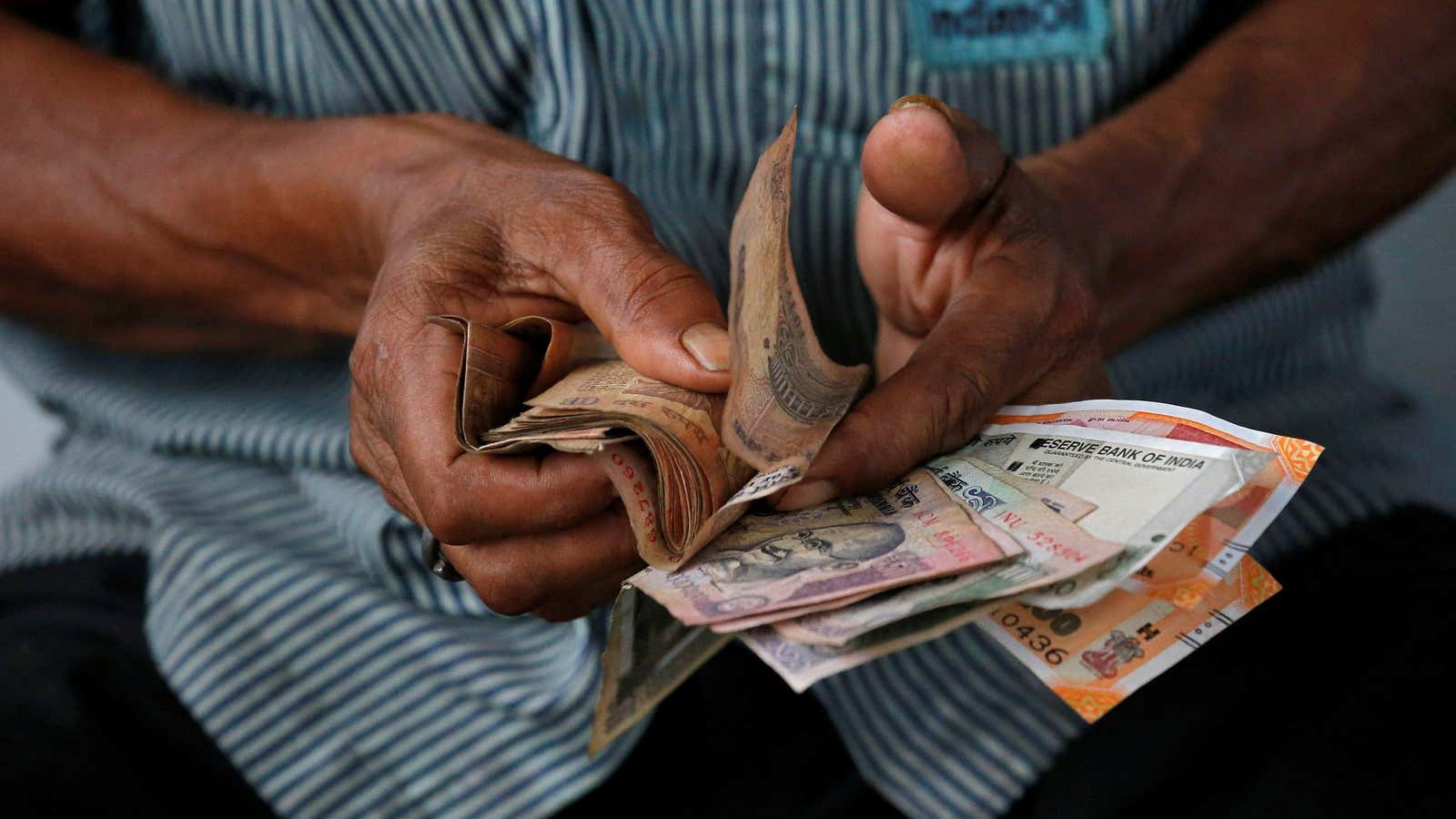India’s Forex Reserves Register Steepest Weekly Fall in 6 Months

India’s Forex Reserves Register Steepest Weekly Fall in 6 Months
According to the Reserve Bank of India’s (RBI) weekly statistics supplement published on Friday, India’s foreign exchange reserves fell by $7.27 billion on a weekly basis to $594.89 billion as of August 18.
On an outstanding basis, the foreign reserves were at their lowest point in the previous two months, and this is the steepest weekly decline in the prior six months. The foreign exchange reserves increased by $708 million to $602.16 billion during the week ending August 11.

According to news agency PTI, the RBI’s foreign exchange reserves hit an all-time high of $645 billion in October 2021. The reserves suffered as a result of the regulator using its forex cushion to protect the rupee from market volatility. The rupee lost 0.3% to 83.11 during the week ending August 18, while on Friday it lost 0.10% to 82.65.
The value of the gain or depreciation of non-US currencies like the euro, pound, and yen held in foreign exchange reserves is included in the foreign currency assets, expressed in dollar terms.
The results show that foreign currency assets, which make up the majority of foreign exchange reserves, decreased by $6.6 billion to $527.78 billion. In contrast, gold reserves decreased by $515 million week over week to $43.8 billion.
India’s reserve position in the International Monetary Fund (IMF) decreased by $25 million to little over $5.07 billion, while Special Drawing Rights decreased by $119 million to $18.20 billion.

While foreign exchange reserves had their sharpest weekly decline in the previous six months, as of August 11, total bank credit increased by 20% year over year (YoY) to Rs 148.76 trillion. Without taking into account the HDFC Bank Twins merger, total bank credit increased by 15% YoY to Rs 142.72 trillion.
As of August 11, total deposits increased 13.5% YoY to Rs 192.36 trillion. Absent the merger of HDFC and HDFC Bank, total deposits increased 13% YoY to Rs 190.88 trillion.
In a striking development that has caught the attention of economists, policymakers, and investors alike, India’s foreign exchange (forex) reserves have registered their steepest weekly fall in six months. The Reserve Bank of India (RBI), the country’s central bank, announced that the forex reserves have dipped by $X billion, taking the total reserves to $Y billion. This article aims to dissect the causes behind this sharp decline and explore its possible implications for India’s economy and financial stability.

Before diving into the details, it’s important to understand what forex reserves are and why they matter. Forex reserves are assets held by a country’s central bank in foreign currencies, gold, and Special Drawing Rights (SDRs). These reserves serve multiple purposes:
- To stabilize or increase the value of the domestic currency
- To finance imports and service external debt
- To maintain liquidity in times of economic crisis
- To reassure foreign investors that the country can handle its financial obligations
Foreign institutional investors (FIIs) have been pulling out of Indian markets due to uncertainties or better opportunities elsewhere, thereby exerting downward pressure on forex reserves.
A surge in global commodity prices, particularly crude oil, has increased India’s import bill substantially. India imports around 80% of its crude oil needs, making it vulnerable to fluctuations in global oil prices.

The strength of the U.S. dollar against a basket of currencies has also led to a decrease in the value of India’s reserves when measured in dollar terms.
The RBI may have intervened in the forex market to prevent excessive volatility of the Rupee, which further depletes reserves.
Scheduled or sudden external debt repayments can lead to a drawdown in forex reserves, especially when they are substantial in size.
A significant fall in forex reserves could potentially affect India’s economic stability. Lower reserves might limit the RBI’s ability to intervene in the forex market, thereby putting pressure on the Rupee.
Foreign investors closely watch forex reserves as an indicator of economic health. A rapid decline could send signals of financial instability, impacting investor confidence and future foreign investments.
Credit rating agencies could see the fall in forex reserves as a weakness, potentially triggering a review of India’s sovereign ratings, which could then affect its borrowing costs.

A decline in reserves may also result in tighter import controls or more aggressive export promotion strategies, as policymakers aim to correct any imbalances in the trade account.
The steepest weekly fall in India’s forex reserves in six months is a multi-faceted issue that merits close scrutiny. Policymakers need to understand the underlying factors contributing to the decline and must take appropriate measures to mitigate the negative effects on economic stability and investor confidence. Monitoring and shoring up the forex reserves are essential tasks that will help safeguard India’s financial future.



